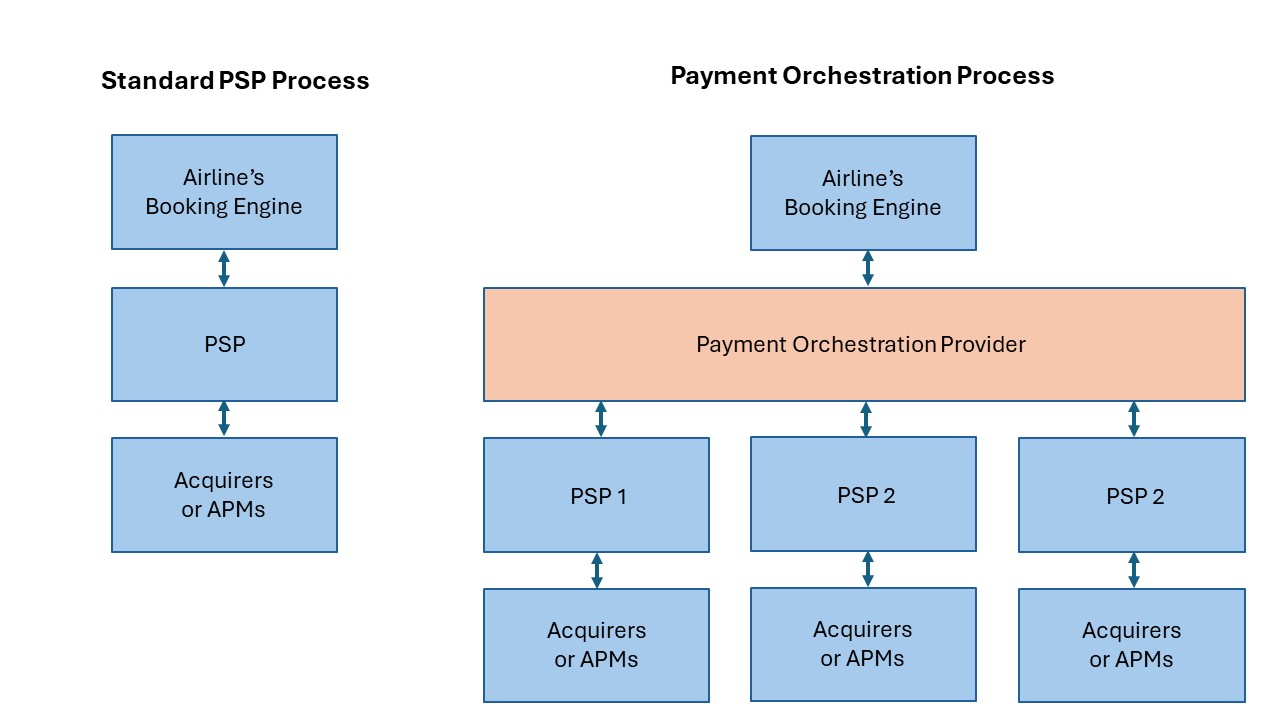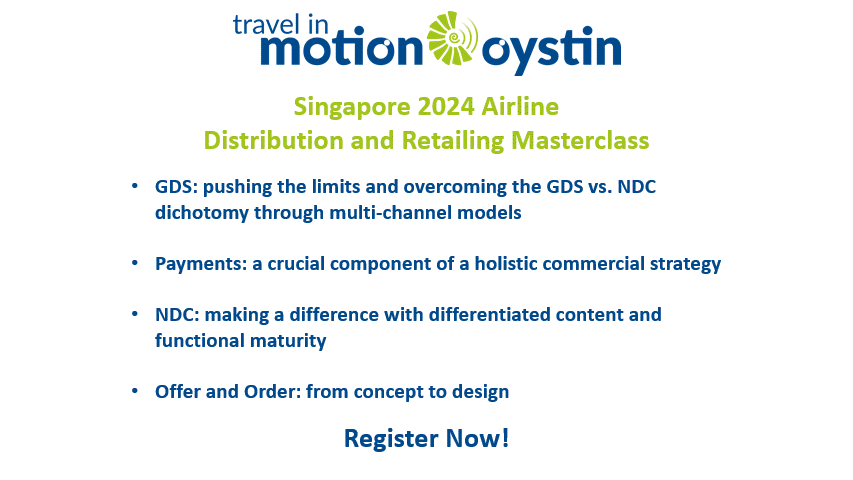Evaluating the success of a distribution strategy
1. Simple question. Multi-faceted answer.
At Travel in Motion, we support airlines in defining their distribution strategy and the execution thereof, creating NDC adoption strategies, evaluating their NDC readiness, and other related topics. During these activities, one important question is bound to come at some point: “How do we ensure that we made the right choice?”.
In other terms, how can an airline evaluate the success of its distribution strategy? While the question is very straightforward, the answer, interestingly, is not.
2. Defining your goals, monitoring your success
First, it is important to identify the goal of said distribution strategy. While most airlines tend to agree that the end goal is optimising distribution cost versus revenue opportunities, airlines will have different focal points to do so. Many airlines are currently focusing on shifting distribution from EDIFACT to NDC, enabling them to better support of Offer and Order processes and technologies: However, each airline has a different path to that end goal or even different visions of what those entails.
Some are going on that journey with the intent of reducing distribution costs, others focus on the customer experience with targeted offers or better servicing, and yet others aim to increase revenues with dynamic pricing and other new capabilities.
Furthermore, with airlines gaining more control over their distribution, new KPIs have started to appear, allowing them to monitor with more precision the efficiency of their strategic choices.
In the rest of this post, we look at some of the industry’s KPIs – old and new. Please note that we are focusing on distribution performance, so, while security, on-time performance, and other metrics are very relevant for airlines, they are not this post’s focus.
3. The Big Five
For a long time, the airline industry has mainly been using five categories of KPIs for distribution which can each be then evaluated per channel and as a global airline performance view.
- Sales and Revenue
The main measure of a successful distribution strategy is its impact on sales and revenue. By analyzing sales data, airlines can understand customer preferences, optimize pricing strategies, and tailor their offerings to meet market demand. Revenue analysis, on the other hand, helps assess the profitability of different routes, flights, and services, enabling strategic decisions about resource allocation. Together, these metrics offer a comprehensive view of the airline’s retail performance, guiding the refinement of its distribution strategy for enhanced customer satisfaction and profitability.
This includes not just ticket sales, but also ancillary revenue from add-ons like seat upgrades, extra baggage, and in-flight meals. These ancillary revenues should be tracked as a percentage of total revenue, by market, customer segment, route and other metrics, allowing airlines to identify opportunities for diversification.
- Cost Efficiency
The other side of the coin in evaluating the success of a strategy is to look at the evolution of distribution costs. Each channel has its own associated costs, and with airlines starting to shift their distribution to different channels, it is crucial to monitor the impacts of that shift. Furthermore, while NDC comes with new capabilities, the first steps for an airline with NDC may come with a lesser servicing capability than its other channels, resulting in an increase of customer care costs (and, as we will see later, a decrease in customer satisfaction). Then, by increasing self-servicing capabilities, these costs will start decreasing. Also, as indicated earlier, some airlines become airline retailers with the aim of reducing their distribution costs: for such airlines, this metric is paramount. Further, a shift in channels and distribution model may increase costs for some channels. While this is typically a calculated risk, and offset by channel shift or other means, this must be carefully monitored to ensure the cost increase remains within the bounds as set by the strategy, and the cost offset is successful.
- Reach
Reach refers to the number of potential customers that an airline can connect with through its various distribution channels, such as direct sales on its website, indirect sales through travel agencies, or digital platforms. Reach is often related to market distribution but can also nowadays refer to customer segmentation or agency type. The higher reach an airline has, the more customers it can target. However, as we will see in “conversion”, reach is just the first piece of the puzzle. Converting these potential customers to actual customers is the second. Measuring reach also allows the airline to create products and offer content which is better suited to the various channels, markets buyers and travelers. This, in turn, should increase conversion as well as revenue.
- Conversion rate
Conversion rate measures the quantity of search requests that result in a booking. A high conversion rate indicates that the airline’s offering is well suited to the target markets and segments – or at least, the offering is more attractive than the competition. By evaluating conversion rate, and combining it with markets and segmentation, an airline can tailor its offering to ensure higher conversion, resulting in higher revenues. Most airlines evaluate conversion rates primarily for airfare sales, but a new trend sees airlines starting to monitor ancillary conversion rates as well.
- Customer Satisfaction
Lastly, in the era of modern airline retailing, customer satisfaction is paramount. NDC enables airlines to offer a more personalized and seamless booking experience, which can significantly enhance customer satisfaction. High levels of customer satisfaction indicate that the airline’s distribution strategy and product offering is effective, with products and services being successfully and seamlessly delivered to the customer. Conversely, low satisfaction levels may signal issues, such as inefficiencies in the processes or a mismatch between the airline’s offerings and customer needs. As indicated earlier, during its first step in this new world, an airline may have limited servicing capabilities in its new channels, resulting in a higher need for the airline’s customer care agents to intervene.
4. The new KPIs on the block
- ARM Index score
Becoming a full retailer is a journey, and a long one at that. IATA provides the Airline Retailing Maturity Index, which is a way for airlines to evaluate how advanced they are on that path. By regularly self-evaluating through that score, and tracking the evolution of its ARM index score, an airline can get a good estimate on how far along they are in their retailing maturity. And while these are not directly cost and revenue related, it is safe to assume that a higher maturity can generate more revenue and potentially lead to lower cost of servicing.
- Channel contribution
Channel contribution refers to the percentage of total sales that each distribution channel contributes. If a particular channel has a high contribution, it indicates that the airline’s offerings and marketing strategies are resonating well with customers on that platform. With airlines aiming to see a shift in their distribution, from GDS towards digital direct and NDC (or other direct-connects), monitoring channel contribution is the best way to evaluate this shift. Similarly to previous metrics, this KPI can be evaluated through several factors such as the channel contribution for a specific market, customer type, or even agency type when focusing on indirect distribution.
- Sustainability
Either due to regulations, customer motivation, or company policy: sustainability is a serious consideration. Travel in Motion recently published a number of posts on the topic on this very same site (go read it, it’s good!). Sustainability involves assessing factors such as the carbon footprint of flights, the use of renewable energy in operations, the implementation of waste reduction strategies in onboard services and many other aspects. A successful distribution strategy should align with the airline’s sustainability goals, promoting eco-friendly options and communicating the airline’s green initiatives to customers. Furthermore, by doing so, airlines can attract environmentally conscious customers, enhance their brand image, and ensure their operations are future-proof against increasing environmental regulations.
5. Conclusion and call to action
Deciding which KPIs to use in order to evaluate your strategy is quite complex. However, with airlines gaining control of their entire distribution, with more visibility, it is now possible for them to have a holistic approach to evaluating their success. Thus, once the airline has defined the key metrics, it must also evaluate where the data for these measurements is best gathered from, where they should be stored and how these can be visualized. Further, it is key to present the relevant KPIs at the right levels and to the right audiences, ensuring that there is no information overflow which will result in the data being ignored.
It is now up to each airline to define their goal, decide on a strategy to target them and pick the relevant KPIs to evaluate this strategy. Travel in Motion helps airlines in many ways, and part of designing a new distribution strategy is how to properly evaluate it. By setting proper goals and monitoring every step of the way towards these goals, we support airlines in moving forward in the right direction. There is no one path to modern airline retailing, but rather many interesting journeys.
Thibaud Rohmer, Travel in Motion AG
Meet the author: Do you want to further discuss this topic or are you interested in an exchange about how airline distribution is changing? Meet Thibaud Rohmer, as well as our Partner and Managing Director Daniel Friedli at the Aviation Festival Americas on 15 and 16 May 2024 in Miami, USA. You can register here and by entering the discount code INMOTION40 you will get a 40% discount on the admission fee.

















